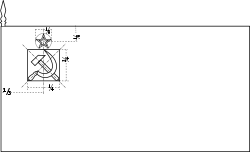Paul Anderson (tyngdlyftare)
| Paul Anderson | ||
| Tyngdlyftning, herrar | ||
| Nation: | ||
|---|---|---|
| Guld | Melbourne 1956 | +90 kg |
| Världsmästerskap | ||
| Guld | München 1955 | +90 kg |
Paul Anderson, född 17 oktober 1932 i Toccoa, Georgia, död 15 augusti 1994 i Vidalia, Georgia, var en amerikansk styrkeman och olympisk mästare i tungvikt 1956 i klass 90+.[1]
Karriär
Paul började som tonåring att styrketräna för att bli bättre i amerikansk fotboll. När han började på universitet så träffade han Bob Peoples, en styrkelyftare som introducerade Paul till styrkelyft. Det sägs att Paul i knäböj, klarade 10 repetitioner på 160 kg, första gången han testade övningen, och då helt utan uppvärmning.
Tyngdlyftning
1955 åkte Paul till Ryssland för att tävla i tyngdlyftning. Det olympiska rekordet i press låg på 150 kg. Paul pressade 183 kg och kallades för "The Wonder of Nature".
Paul blev både världsmästare 1955 och OS-mästare i Melbourne Australien 1956, han hade då samtliga rekord i tyngdlyftning. Paul blev dock utesluten ur Olympiska sommarspelen 1960, då han tagit emot pengar för att visa upp sig på flera utställningar, något som ansågs olämpligt vid denna tid. Paul noterade som bäst under sin karriär 185.5 kg i axelpress, 196.5 kg i stöt och 145 kg i ryck, totalt 512,5 kg.
Styrkelyft
Paul Anderson noterade som proffs 284 kg i bänkpress, 544 kg i knäböj (2 repetitioner) och 371 kg i marklyft, alltså 1199 kg totalt[2]. Han skall även ha dragit 1000 lbs (ca 453 kg) i marklyft med metallkrokar runt handlederna. På toppen av sin karriär vägde Paul runt 160 kg. Paul gjorde också ett så kallat "backlift" som innebär att man med hjälp av ryggen lättar en vikt från marken på 1288,20 kg.
Referenser
- ^ Paul Anderson Bio, Stats, and Results Arkiverad 21 april 2009 hämtat från the Wayback Machine.. Sports Reference. Läst 31 december 2015.
- ^ Guinness Rekordbok. Forum. 1984. sid. 318. ISBN 91-37-08550-6
| ||||||||||||||||
Media som används på denna webbplats
De olympiska ringarna, med genomskinlig bakgrund.
Författare/Upphovsman: F l a n k e r, Licens: CC BY-SA 2.5
Flag of the Kingdom of Sardinia (1851-1861) and of the Kingdom of Italy (1861-1946). Use: Civil flag and ensign. In a governmental or a military context, the crowned version (see Crowned version) was always used (as State flag and naval ensign).
US Flag with 48 stars. In use for 47 years from July 4, 1912, to July 3, 1959.
Flag of Iran. The tricolor flag was introduced in 1906, but after the Islamic Revolution of 1979 the Arabic words 'Allahu akbar' ('God is great'), written in the Kufic script of the Qur'an and repeated 22 times, were added to the red and green strips where they border the white central strip and in the middle is the emblem of Iran (which is a stylized Persian alphabet of the Arabic word Allah ("God")).
The official ISIRI standard (translation at FotW) gives two slightly different methods of construction for the flag: a compass-and-straightedge construction used for File:Flag of Iran (official).svg, and a "simplified" construction sheet with rational numbers used for this file.
Flag of Belarus 1995-2012
Paul Anderson durante un esercizio di squat con..... una ruota di carro
Flag of Germany with a 3:2 ratio, instead of 3:5. The 3:2 version was used by the German Confederation and the Weimar Republic. See Flags of the World for more information.
(c) I, Cmapm, CC BY-SA 3.0
The flag of the Soviet Union (1955-1991) using a darker shade of red.


















